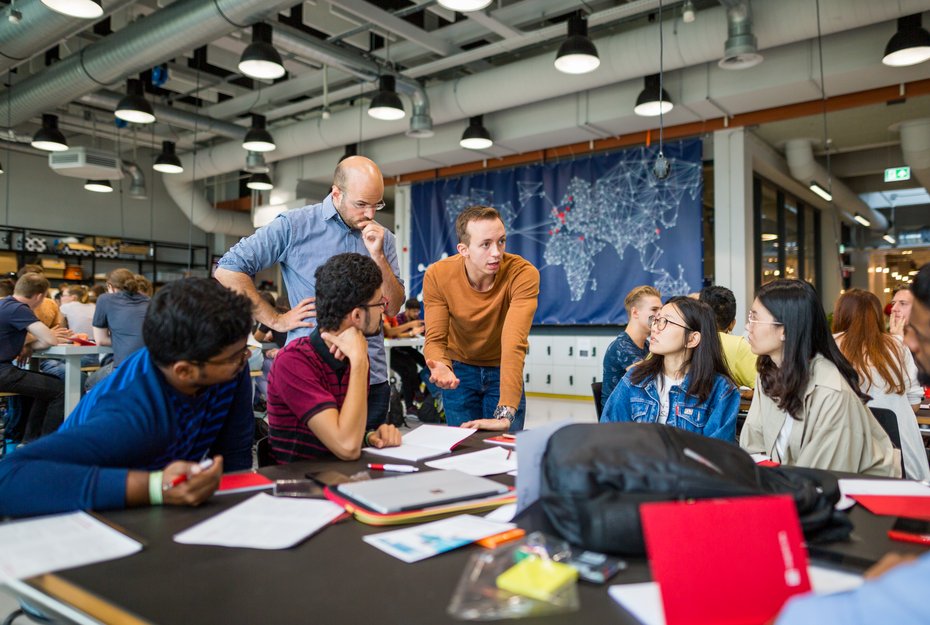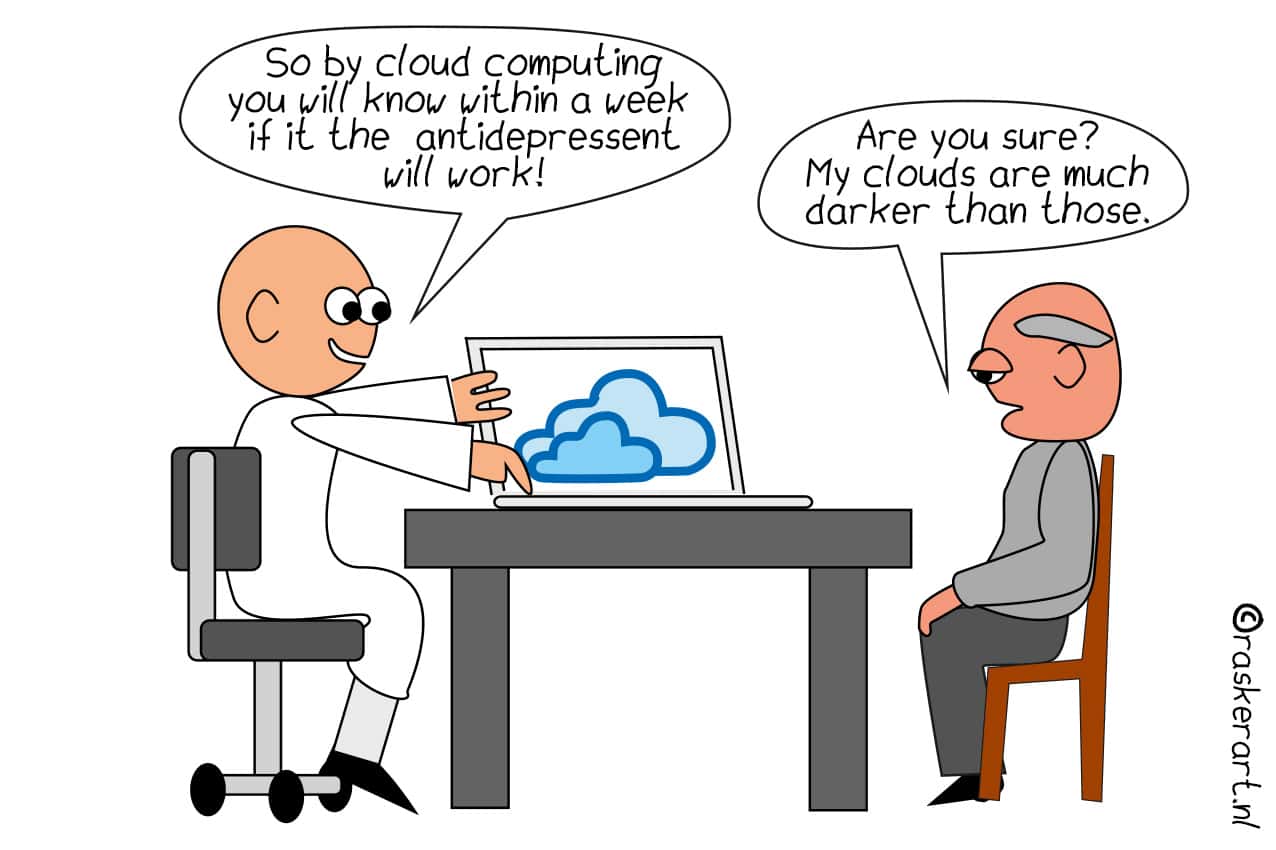
Eindhoven University of Technology (TU/e) in the Netherlands uses Challenge Based Learning to challenge students to work on concrete social issues.
In-depth knowledge
Traditionally a course comprises eight weeks of lectures and intermediary tests. These eight weeks are followed by a written exam to test their theoretical knowledge. This is good for some purposes, says Lenny Apon, education coordinator at TU/e innovation Space and Honors Academy. “For example, for the theoretical transfer of knowledge and deepening that knowledge.”
With Challenge Based Learning, students work on a relevant social problem, which they themselves work out a solution, Apon explains. They work together on a solution from a variety of disciplines. This way, they can apply the knowledge they have learned and gain new knowledge and insights. Where appropriate, they build a prototype and reflect on their work. “This requires completely different types of facilities and coaching from teachers.”
Prototyping
Apon explains that Innovation Space is fully equipped to work so that students can work in an interdisciplinary way. They can brainstorm with each other and build prototypes. There are lecture rooms as well as an open space which the students can use as a workplace. But events like for example “innoApproach” and “Sprinkplank” can also take place there.
And students from various programs work, outside the curriculum, in teams on sustainability issues. Such as team Polar, CORE, and BrightBin to name a few. No lectures, but they get to build prototypes instead, as IO described it in a previous article about TU/e Innovation Space.
“Innovation Space is a kind of expertise center for Challenge Based Learning”, Apon continues. “We’re trying to set an example and help teachers structure their teaching.”
Faculties
Michael Bots, program leader of Challenge Based Learning, emphasizes that Innovation Space is not the only place where this educational concept is put into practice. “The Faculty of Industrial Design has been working in teams with challenges for a number of years. And recently, faculties such as Electrical Engineering, Mechanical Engineering, and Applied Physics have all embarked on projects.”
Challenge Based Learning was completely new for Professor of Applied Physics, Federico Toschi. “I mainly taught in front of the blackboard.” Of course, there are more interactive ways of working, but the space that Challenge Based Learning gives students was a completely new idea to Toschi. Last summer, together with his assistant teachers, he looked into how they could let students work on their own assignments in complete freedom. And how to supervise them in the process, Toschi adds.
Toschi started this academic year with the subject Physics of social systems. Part of the broad TU/e USE learning line curriculum. USE stands for User, Society and Entrepreneurial perspective. Each academic year, bachelor students of all programs within the TU/e choose a subject from these learning paths. They learn to work together with others and to look beyond their field of study, among other things.
Physics and psychology
Toschi uses Challenge Based Learning to give the students a framework on how they can identify a problem they get to work on as a group. The main question is “how do social systems work?” Like, for example, a crowd in a station. “In order to understand social systems, you need quantitative measurement methods such as physics as well as psychology. Why do people behave the way they behave?” As part of the learning line Physics of social systems, students learn to observe, model and adapt social systems in three successive blocks.
ProRail is the client for the students this academic year. Students set up their own assignments as follows: An efficient flow of people on the platform, or the accessibility of stations for people with disabilities, for instance, or safety in the time of corona. Toschi: ” We intend to approach several clients over the coming years.”
In Toschi’s opinion, better solutions can be found when you approach a problem as a multidisciplinary group than when you work alone. “And it works even better if students are able to come up with that problem themselves, then it is more their own work.”
Give them enough space
You have to help students with the amount of scope they get, says Toschi. “Some feel the pressure that they have to accomplish things and act right away. While sometimes it’s better to take another day to figure out what you’re going to focus on. There are so many social challenges, there is no right or wrong. But make a well-founded choice. If you can define your project in a certain context then that is extremely worthwhile.”
A condition of the reports from the students is that Toschi gets a thorough understanding of the physical, psychological, and ethical aspects involved. After all, in social systems, ethical issues also come to the fore, states the professor. “And what I want to see is consistency in the way they work on the project. They are free in everything else.”
Besides the supervision needed to come up with a worthy assignment, it is also a challenge for Toschi to supervise the students as they make progress with their projects. Students have to use software programs such as Trello to do this. They keep track of what their tasks are and how far along they are. This way, the team members can keep tabs on each other. “Some students find it difficult to keep up with this kind of virtual task dashboard. They see it as something extra they have to do. Whereas it’s good to see what everyone is working on. That the allocation of the work is not lopsided and that they work consistently on their project.”
Dedication
Toschi is adamant that he is especially enthusiastic about this learning method. “It is rewarding to see that the students work with such dedication on the challenges that they have come up with themselves. And that they are contributing to a solution for the problems in real life that way.”
What students learn above all is to reflect on themselves, says Industrial Design student Anna Merl, and this is the greatest advantage of Challenge Based Learning for her. The Austrian student also followed a technical course in her native country. There she absorbed all the knowledge she was given during lectures and then “spat it out”, so to speak, during an exam. “With Industrial Design, you learn to reflect on what you are doing and what you still have to learn. That works much better.”
At Innovation Space, she followed the learning line Responsible Innovation for the World. This course is taught by Johanna Höffken. She was declared Teacher of the Year this year. Merl worked for three-quarters of the year with teammates on a project for Save Plastics, which works with non-recyclable plastic waste. “It was challenging to develop an affordable solution for such a vast and relevant topic.” Höffken also gave workshops in between courses. For example, on the subject of entrepreneurship when she noticed that the students had difficulty doing business.
Think things over more thoroughly first
Because Merl is studying Industrial Design, she is well versed in brainstorming and building prototypes. Merl learned to work with a more detailed approach. Not by brainstorming directly, but by doing research first. First, take a critical look at your sources and subject. “I become enthusiastic and get straight to work. But by examining things more critically, you can avoid misconceptions and wrong assumptions. You can get to work in a more informed way. This is crucial when it comes to sustainability.”
Not every subject is suitable for Challenge Based Learning, Toschi reckons. “I don’t know how you could use it for math, for one thing.” Nor should the whole education system change radically, Challenge Based Learning program leader Michael Bots points out. “It’s about achieving the right level of integration.”







